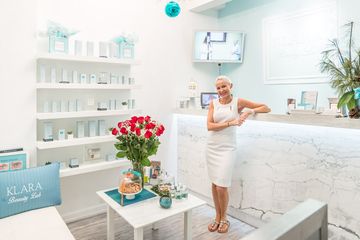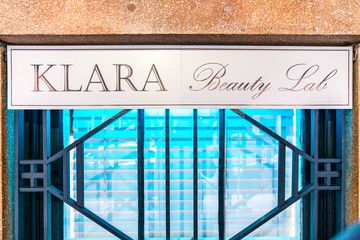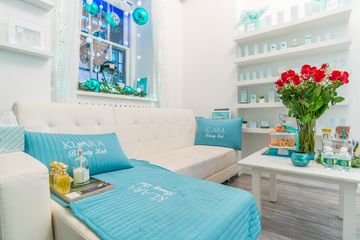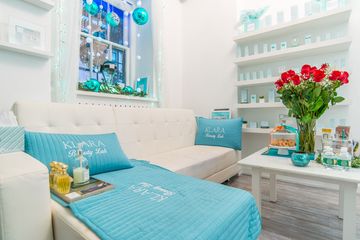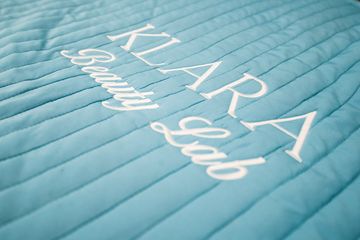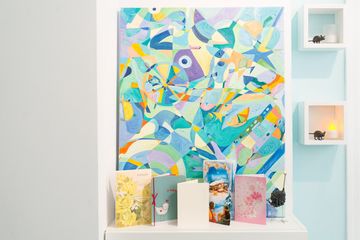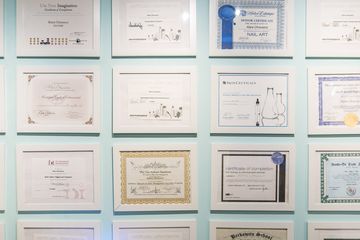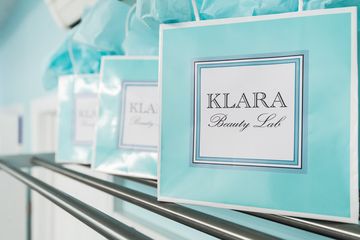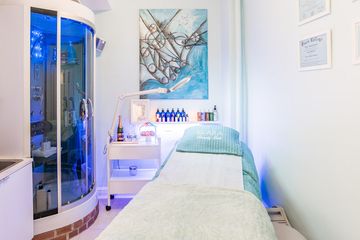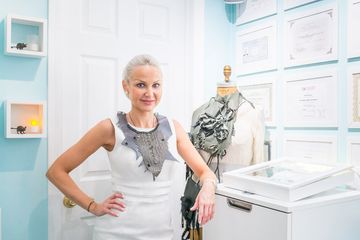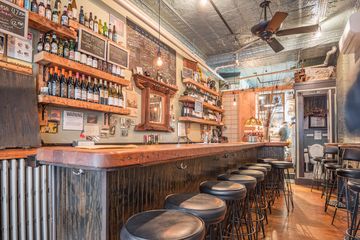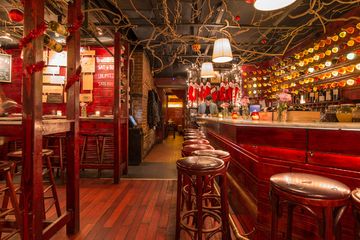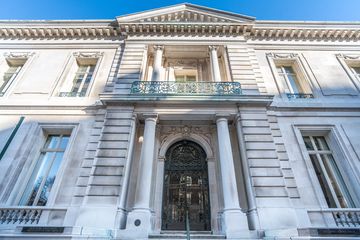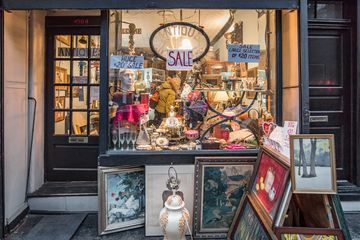
Everything about Klara Beauty Lab embraces the overall ambience of tranquility and hospitality, from the teal, turquoise, and white color palate to the welcoming plate of cookies in the waiting room. I immediately felt tingly and at ease upon walking in. The greatest source of calm is, of course, Klara Chrzuszcz herself, who greeted me warmly. I congratulated her on using her space to its full potential. In every inch of the side street shop there are comforting touches to make customers feel relaxed. An especially personal detail of the spa is the display of elegant leather accessories, including wrap around belts and necklaces - Klara is a leather worker in her free time.
When I asked Klara what got her into the skincare world, she apologized for the cliché and said, “I had problems with my own skin.” It was a touching answer even if, as she claims, it is a common one, but it was also hard for me to believe as I looked at her currently flawless complexion. Klara is a walking advertisement for clear skin and beauty, with her glowing face, sparkling eyes, and sleek, pulled back hair. Her route to owning a medical spa, however, was circuitous. She studied pediatric psychology in Poland and, upon graduating, helped children who had dealt with trauma reenter normal life. “I’m a giver,” Klara said with a humble smile, reflecting back on those years when she learned that whatever she did with her life, she wanted to help people.
She attended different programs and courses in London, Ireland, and Poland before moving to New York in 2004 and opening Klara Beauty Lab. I was impressed by the multiple certificates and diplomas on her walls, but Klara assured me that she is never done learning: “It is my passion and my profession.” Klara went on to tell me that she is a pioneer for a number of products and procedures, most recently Lash Lift, a treatment that helps women reach their full eye lash length without using extensions. She was also proud to tell me that she has a wide range of clients who come to her from as far away as Dubai, Singapore, and Taiwan. Klara sets up champagne and food for her guests. “It’s their relaxing time,” Klara said simply. She has had some of the same clients for eleven years, whom she refers to as her “loyal spies.” But whether the it is a client's first facial or hundredth, Klara tries to make them as relaxed as possible - Klara revealed to me, laughing, “I love when people snore during their treatments.”
